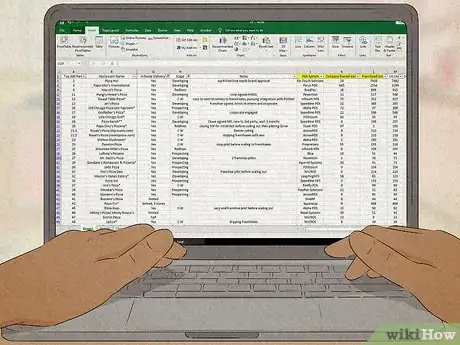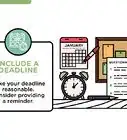This article was co-authored by wikiHow Staff. Our trained team of editors and researchers validate articles for accuracy and comprehensiveness. wikiHow's Content Management Team carefully monitors the work from our editorial staff to ensure that each article is backed by trusted research and meets our high quality standards.
wikiHow marks an article as reader-approved once it receives enough positive feedback. In this case, 83% of readers who voted found the article helpful, earning it our reader-approved status.
This article has been viewed 81,349 times.
Learn more...
Telephone research interviewers contact survey respondents by phone and ask a specific set of questions for each survey. The job involves following an exact script and recording respondents' answers using data entry software. By learning how to properly introduce, conduct, and conclude a telephone survey, you can get a leg up on the competition and prepare for employment as an interviewer.
Steps
Introducing the Survey
-
1Introduce the survey to each respondent. At the beginning of each phone call you are expected to introduce yourself and the survey company, describe the topic of the survey and explain the demographics of the survey.[1]
- It's helpful to use dynamic language in your introduction. Instead of "Are you interested in taking a survey?" you might say something like "This is a very important survey designed to directly impact the services and programs available to your family."
- Tell each survey respondent how their contact information was obtained. Inform the participant if their phone number was selected at random from a list or if it was obtained from a professional agency.
-
2Describe the survey process. Reveal the purpose of the research and survey and provide an estimate of the time needed to complete the survey. Giving the respondent a clear picture of what the survey entails shows that you’re being forthright and makes them more likely to proceed with the survey.[2]
- Promise confidentiality and anonymity to the respondent when it is appropriate. Let the respondent know that participation in the survey is voluntary.
- Inform the respondents that it is permissible to skip a particular question if they prefer not to answer it.
- Provide the lead investigator's name if the respondent asks for it.
Advertisement -
3Persuade respondents to complete the survey. Your employer should provide specialized training to teach you how to convert survey refusals into completed surveys. Some of these methods include stressing the importance of your research, assuring the respondent that the survey won’t be burdensome, and (if the survey is short) letting the respondent know you won’t take up too much of their time.[3]
- Attempt to change a refusal to a completed survey at least twice. If you are unable to do so, request permission to call back at a more convenient time.
Collecting and Entering Data
-
1Read survey questions word-for-word. When conducting the survey, stick to the script. Chances are, whoever wrote the questionnaire thought long and hard about the types of questions they wanted to ask. By reading each question verbatim, you’ll elicit the exact responses your employer is looking for and reduce the possibility of skewing survey responses.[4]
-
2Familiarize yourself with data entry. Depending on the survey, you may need to become familiar with the program or software your employer has chosen for entering data. Programs like Microsoft Excel, among others, are popular choices. Spend some time navigating the software so you’ll be aware of its limitations and unique features. This will prepare you to enter data efficiently and reduce the risk of mistakes.[5]
-
3Enter each response carefully. With computer-assisted telephone interviewing, you are given specific questions to ask the respondent. When he or she gives you a response, you enter that response into the computer, where it is immediately entered into the database. Make sure you enter each response just as you heard it to ensure accurate data analysis and interpretation.
- You may find it helpful to pace the interview by alternating between simple questions and those that require lengthier responses. If you have an involved question, follow it up with a yes or no question to allow yourself enough time to record the answers accurately.
- Some data entry programs will check your entries for errors, but it’s always a good idea to spot check your work.
Concluding the Survey
-
1Obtain demographic data from each respondent. This is often the last step in a telephone survey. While it is often optional, it’s typically very useful because it allows the data to be coded more accurately. Demographic data includes gender, age, political affiliation, religious affiliation, gender identity and ethnicity.[6]
-
2Thank your respondent. It’s very important to thank your participant for their time and effort. Aside from common courtesy, thanking your participant is key to the overall success of the survey. Many phone surveys are recorded for quality purposes, so it’s important to follow all the steps and conclude the survey properly.
- You might ask your respondent something like, "Do you have any suggestions for how I might improve this survey?" This lets the respondent know that you value their opinion. Be sure to let them know you're grateful for their feedback.
-
3Analyze your performance. After you’ve ended the call, take stock of how the survey went and what you could do to improve. Check the time to see if you stuck to your schedule and communicated the questions efficiently.
- Conduct a mini survey of yourself by asking questions about your performance and responding as honestly as possible. This will help you improve as an interviewer while you practice for your next survey.
Community Q&A
-
QuestionHow do I capture verbatim answers?
 John WrenCommunity AnswerIt's hard to capture the entire message, sometimes the heart of the response is recorded. Sometimes a recording is made for later transcription. You can try taking notes yourself if you want, but it is difficult to transcribe while talking.
John WrenCommunity AnswerIt's hard to capture the entire message, sometimes the heart of the response is recorded. Sometimes a recording is made for later transcription. You can try taking notes yourself if you want, but it is difficult to transcribe while talking.
Warnings
- Don't allow frustration or anger to show in your voice while interacting with angry, rude or difficult survey respondents. Notify your supervisor of a difficult interview so they can listen in.⧼thumbs_response⧽
Things You'll Need
- Survey questionnaire
- Data entry system
- Bottle of water
References
- ↑ https://uwaterloo.ca/survey-research-centre/survey-services/types-survey-research/telephone-surveys/introductory-scripts/sample-introductory-scripts
- ↑ https://uwaterloo.ca/survey-research-centre/survey-services/types-survey-research/telephone-surveys/introductory-scripts/sample-introductory-scripts
- ↑ http://www.wallacefoundation.org/knowledge-center/Documents/Workbook-F-Telephone-Surveys.pdf
- ↑ https://www.wallacefoundation.org/knowledge-center/Documents/Workbook-F-Telephone-Surveys.pdf
- ↑ http://www.surveygoldsolutions.com/6-conducting-your-phone-survey.html
- ↑ https://assets.publishing.service.gov.uk/government/uploads/system/uploads/attachment_data/file/708169/Survey_good_practice.pdf















-Step-17.webp)






















































